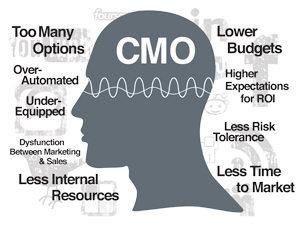A recent blog post by Brian Solis calls out a systemic issue we are faced with every day as marketers – the issue of understanding consumers. Brian points to a serious lack of understanding that brands have for the context in which their consumers live.
 You see folks, there once was a time when businesses believed that they were in business because they had a product – not necessarily because there was a market for this product. And, there once was a time, only shortly after businesses believed their product was enough, that marketing was called upon to cater to the people who consumed. But, what catering to the consumer meant – at least at that time – was to put pretty pictures and nifty words on a poster and hope it would make people want the product.
You see folks, there once was a time when businesses believed that they were in business because they had a product – not necessarily because there was a market for this product. And, there once was a time, only shortly after businesses believed their product was enough, that marketing was called upon to cater to the people who consumed. But, what catering to the consumer meant – at least at that time – was to put pretty pictures and nifty words on a poster and hope it would make people want the product.
The issue with this approach was that brands would broadcast to their consumers all the things they thought their consumers wanted to see and hear.
Now, with the advent of social media platforms and quick adoption rates, marketers, businesses and brands rejoice. There is a direct view to the consumer and more of what “we think they want”. This plethora of information has been taken in and more than one brand is taking the opportunity to talk to their consumer. But that’s the problem, isnt’t it? The dialogue isn’t really dialogue.
I recently gave a presentation at Social Media Masters in Toronto. The premise of my presentation was to share that brands must become human again. We, as marketers and business owners, must allow brands to become human again. Taking notice of the social media chatter is only one part… It empowers us to better understand the context in which our consumers live, but it also gives us the opportunity to see the type of content that genuinely engages them. It is this engagement that gets us one step closer to real dialogue. And real dialogue is the beginning of creating human brands.
Read more
, in person, but didn’t take it.http://www.youtube.com/watch?v=TTm5jhlYhTs&feature=player_embedded


 Every business needs content in order to be found in search, and to differentiate them from the competition. Without quality, helpful content (and lots of it), you’re lost in a school of fish that are all the same color. Who’s going to find you? Who’s going to pick you?
Every business needs content in order to be found in search, and to differentiate them from the competition. Without quality, helpful content (and lots of it), you’re lost in a school of fish that are all the same color. Who’s going to find you? Who’s going to pick you? According to a January article by eMarketer, research from the social marketing software firm Awareness, Inc. shows that businesses are thinking about getting back into blogging for 2012, and it’s about time. The survey also indicated that businesses are looking at expanding their social footprint to new platforms, but I think the “getting back to basics” with blogging is a particularly good strategy.
According to a January article by eMarketer, research from the social marketing software firm Awareness, Inc. shows that businesses are thinking about getting back into blogging for 2012, and it’s about time. The survey also indicated that businesses are looking at expanding their social footprint to new platforms, but I think the “getting back to basics” with blogging is a particularly good strategy. Dear Publishers and business leaders,
Dear Publishers and business leaders,

 For example,
For example,